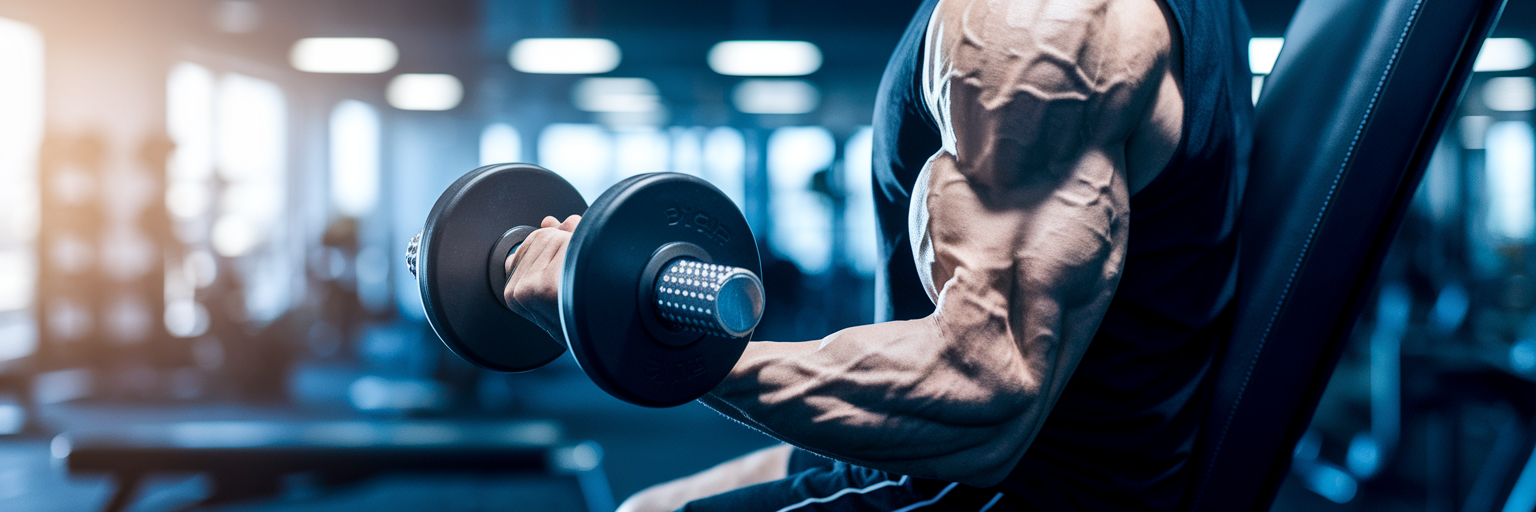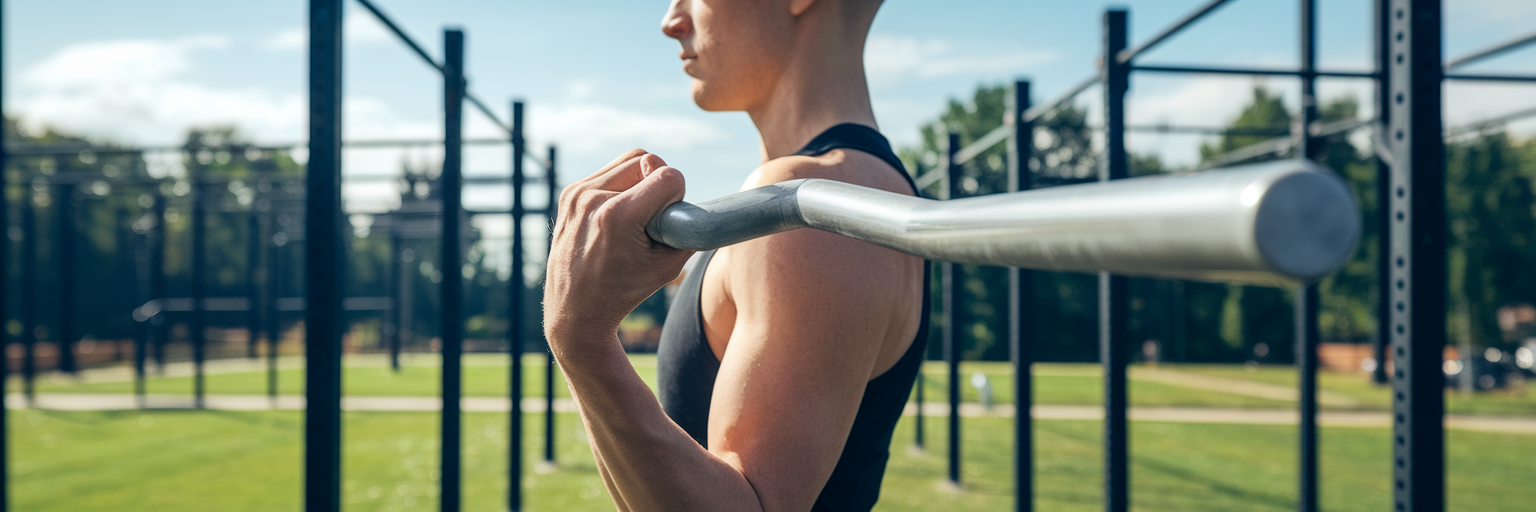
Build bigger, stronger arms with the 5 most effective biceps exercises for muscle growth. Learn proper form for barbell curls, incline curls, and more to maximize your results.
Understanding Bicep Anatomy for Better Growth
Many of us have spent hours performing endless curls, only to see minimal results. The frustration is real, but the solution often lies not in doing more, but in understanding what you are working on. The biceps are more complex than they appear. The main muscle, the biceps brachii, has two parts: the long head, which creates the coveted bicep “peak,” and the short head, which adds width and fullness to your arm.
But effective biceps exercises go deeper. Beneath the bicep lies the brachialis. Think of it as a foundation; building it actually pushes your bicep up, making it look significantly larger. Then there is the brachioradialis, a powerful forearm muscle that contributes to overall arm thickness and pulling strength. The most effective arm exercises for muscle growth are those that strategically manipulate your grip and arm position to target all these areas, ensuring balanced and complete development.
Table of Contents
Exercise 1: The Barbell Curl for Foundational Mass

The barbell curl is the cornerstone of any serious arm routine. Its primary advantage is simple: it allows you to use heavy weight, which is the most critical factor for driving muscle growth through progressive overload. This is one of the fundamental biceps exercises for mass. To execute it with perfect form, follow these steps:
- Stand with your feet shoulder-width apart, holding a barbell with an underhand grip where your palms face forward.
- Keep your elbows pinned to your sides and maintain an upright chest. Avoid leaning back.
- Curl the bar toward your shoulders, focusing entirely on squeezing the biceps at the top of the movement.
- Lower the bar slowly and under control to the starting position, allowing your arms to achieve a full stretch.
The most common mistake is using momentum, or “body English,” to swing the weight up. This takes the tension off the biceps and puts it on your lower back. You must select a weight that allows for strict form. While some experienced lifters use a “cheat curl” to push past a plateau on the final rep or two, it should not be a regular part of your routine. True growth comes from making the muscle do the work.
Exercise 2: The Incline Dumbbell Curl for a Deeper Stretch
While the barbell curl focuses on heavy contraction, the incline dumbbell curl targets growth from a different angle: a deep pre-stretch. Starting the movement with your arms behind your body creates a powerful stimulus for the long head of the bicep, a process known as stretch-mediated hypertrophy. According to a report from StrengthLog, various curl types activate the biceps differently, and the incline curl is noted for its unique starting position that emphasizes the long head.
To perform biceps exercises correctly, set an incline bench to about 45-60 degrees. Lie back and let the dumbbells hang with your arms fully extended toward the floor. From this stretched position, curl the weight up. As you lift, supinate your wrist by turning your palm to face the ceiling, which creates a much stronger contraction. The real magic, however, happens on the way down. Lower the weight with a slow, two to three-second count to maximize time under tension. This controlled negative is what makes the exercise so effective for building that bicep peak.
Exercise 3: The Hammer Curl for Arm Thickness

If you want impressive arms, you cannot ignore the muscles that provide thickness and width. The hammer curl is the best tool for this job, as it directly targets the brachialis and brachioradialis. The brachialis, sitting under the bicep, acts like a foundation that pushes the bicep peak higher, creating a more commanding arm. The instructions are straightforward: hold dumbbells with a neutral grip, where your palms face each other, as if holding a hammer.
Keeping your elbows locked at your sides, lift the weight straight up without any wrist rotation. The neutral grip is mechanically strong, allowing you to lift heavier weight than with other curls. This not only builds the brachialis but also significantly boosts your forearm and grip strength. This contributes to better performance in other lifts and overall fitness, a cornerstone of the approach at Starline Health. For a slight variation, try the cross-body hammer curl, where you curl the dumbbell toward the opposite shoulder. This shifts the emphasis slightly and provides a different training stimulus.
Exercise 4: The Preacher Curl for Unmatched Isolation
Learning how to get bigger biceps often involves mastering isolation. The preacher curl excels at this by making it nearly impossible to cheat. By bracing your upper arm against the pad, you eliminate any momentum from your shoulders or back, forcing the bicep’s short head to perform all the work. This intense focus is what builds the inner part of the arm, contributing to a fuller, more rounded look.
To set up, adjust the seat so your armpit is snug against the top of the pad. Your entire upper arm should remain in contact with the pad throughout the movement. A common error is loading too much weight, which results in half-reps that miss the most important parts of the exercise. Instead, choose a moderate weight and focus on achieving a full stretch at the bottom without hyperextending your elbow. Then, drive the weight up and squeeze powerfully at the top. Whether you use an EZ-bar or a dumbbell, the principle remains the same: pure, unadulterated bicep isolation.
Exercise 5: The Drag Curl for a Powerful Peak Contraction

The drag curl is a less common but highly effective movement for targeting the bicep’s long head and building a pronounced peak. It is a staple in many top bicep workouts for a reason. The mechanic is unique: instead of curling the weight out and up in an arc, you “drag” the barbell or dumbbells up along your torso by pulling your elbows backward. This keeps the weight close to your body throughout the entire lift.
The feeling is distinct from any other curl. It creates an incredibly intense, almost cramped contraction at the top of the movement that is difficult to replicate. Because of this focus on peak contraction, the drag curl is an excellent “finisher.” Use it at the end of your workout with a lighter weight. The goal is not to move heavy loads but to establish a strong mind-muscle connection and drive a maximum amount of blood into the muscle for a final growth stimulus. It is the perfect way to cap off an arm day.
Building Your Ultimate Biceps exercises
Putting it all together is simpler than you think. You do not need to do every exercise in one session. Instead, choose two or three from this list for each workout, ensuring you include a mix of movements throughout the week. Combine a mass builder like the Barbell Curl, a stretch-focused exercise like the Incline Curl, and an isolation movement like the Preacher or Drag Curl. Aim for 12-20 total hard sets for your biceps per week, split across one or two sessions.
Remember the core principle of progressive overload: consistently strive to add a little more weight or an extra rep. Of course, training is only part of the equation. Muscle growth demands proper fuel and recovery. For those looking to optimize their diet, one of our low carb high protein vegetarian diet plan options can be an effective strategy to support muscle repair. Similarly, if overall body composition is a goal, a structured weight loss program complements any training regimen.
| Goal | Exercise 1 (Mass) | Exercise 2 (Stretch/Width) | Exercise 3 (Peak/Isolation) |
|---|---|---|---|
| Overall Mass | Barbell Curl (3 sets of 6-8 reps) | Hammer Curl (3 sets of 8-10 reps) | Preacher Curl (3 sets of 10-12 reps) |
| Peak & Definition | Incline Dumbbell Curl (3 sets of 8-12 reps) | Barbell Curl (3 sets of 8-10 reps) | Drag Curl (3 sets of 12-15 reps) |
Note: These routines provide a balanced approach by incorporating biceps exercises that target different parts of the bicep and supporting muscles. Rest 60-90 seconds between sets.
